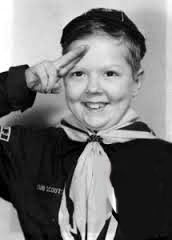
Thanks to The Orang-utan Librarian for yet another interesting tag. In this post, I’ll be exploring all things writing, even including a link where you can test your typing speed–post results in the comments section if you dare. 😉
1. Should you participate in National Novel Writing Month to create a book?

Every writer should participate in NaNoWriMo at least once in zir life. Thirty consecutive days of grinding out as many words as possible establishes consistent writing habits, gets you out of the house, helps you discover great local places to write, creates bonds with other writers, pushes you to allow your imagination run wild and maybe, just maybe, gets you to the point where you can write The End at the end of an actual first draft.
2. Self-publishing or traditional publishing?
Traditional publishing is what I personally strive for, primarily because the idea of having to add a full-time job of promoting my own book to actually writing books, plus working a day job to make ends meet seems utterly daunting. I’d like to have a publisher who can at least explain to me how best to promote my books.
3. Write one idea at a time or write all the ideas at once?
Capture all ideas that come to you, always. That doesn’t mean you have to turn them into books right away.
4. What genre is the easiest to write?
I’m not sure if it’s the easiest, but the genre that comes most naturally to me is young-adult speculative fiction.
5. Where do you need to write to get the work done?
Wherever there aren’t interruptions, and I’ve been getting better at writing even in environments where there’s some noise.
6. Where do you find your inspiration?
In books! I’m inspired by the stories I read and the way they’re written. Of course, I’m also inspired by events from my life, my perspective on things, and my many interests.
7. What age do you start writing?
I vividly remember writing stories in 1st grade.
8. What’s easiest to write? Short stories, stand-alones, series, etc.
Stand-alones. The idea of planning out a series makes my brain explode.
9. Do you mill your books or take years to write a book?
I can whip out a first draft quickly, maybe in a month or two, but ultimately I think I need a year or two to finish a book.
10. How fast can you type?
According to TypingTest.com, I type 95 words a minute.
11. Do you write in the dark or in the light?
Both.
12. Handwritten or typed?
Typed, but I love those rare occasions when I hand-write because I think the writing flows more organically, and when I type out the handwritten words afterward I’m always surprised by how many more words there are than I expected.
13. Alone or with someone else?
Alone, but I’m open to trying out a collaboration. Why not?
14. Any typing hacks?
Practice a lot.
15. Are you already published?
I had a poem published in an anthology; that’s about it.
16. When did you first consider being an author?
I don’t remember ever not wanting to be an author.
17. How many books do you have in draft form?
Four and a half.
18. Do you outline or no?
Proper outlining is a skill I’ve not yet mastered–but I really want to!
19. What’s your favorite note-keeping strategy?
I keep notes in my smart phone, notebooks, and Google docs.

20. What do you think about writing in different genres?
I love reading multiple genres but, ultimately, I’m most comfortable writing YA speculative. I am, however, totally enamored with the idea of experimenting with writing genre mash-ups.
–Eve Messenger
I Tag:
Rayne Adams
Melanie Noell Bernard
G.L. Jackson @ Dreaming in Character
Mackenzie Bates
Ida Auclond
Daisy in the Willows
Nicolette Elzie
Danielle @ The Caffeinated Writer



